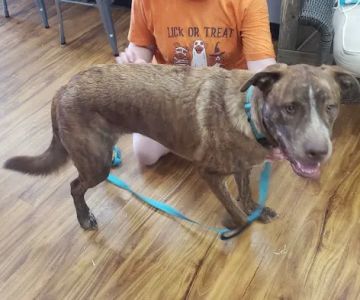Understanding the Behavior: Why Dogs Run After Cars
As a dog owner, it can be alarming to watch your furry friend dash toward a moving vehicle. This behavior, often referred to as "car chasing," is common in many dogs. Understanding why dogs run after cars is the first step in addressing the issue.
There are several reasons why dogs might engage in this dangerous behavior:
- Instinctive chasing: Many dogs, especially those with herding or hunting instincts, may run after cars due to a deep-seated chase instinct.
- Excitement or fear: Some dogs are motivated by the thrill or stress of a moving object. The noise and movement of a car might trigger their response.
- Lack of training: Dogs that aren't properly trained to stay calm in the presence of traffic may develop a habit of chasing cars out of boredom or curiosity.
How to Stop Your Dog from Running After Cars
Preventing your dog from running after cars involves patience, consistency, and a few key training strategies. Here are several techniques that have worked for many dog owners:
1. Use Positive Reinforcement
Positive reinforcement is one of the most effective methods for changing behavior in dogs. When your dog refrains from chasing cars, reward them with treats, praise, or their favorite toy. This reinforces the idea that good behavior leads to positive outcomes.
Start by practicing near a busy road. When your dog focuses on you instead of the cars, give them a treat. Gradually, they will associate calm behavior with rewards.

621 Larpenteur Ave W, Roseville, MN 55113, USA
See Details2. Teach the 'Leave It' Command
The "Leave It" command can be life-saving in situations where your dog may be tempted to run after a car. To teach this command:
- Hold a treat in your hand and let your dog sniff it, but don't let them have it.
- When they stop trying to get the treat, say "Leave it" and reward them with a different treat.
- Practice in different environments, including near roads, until your dog responds reliably to the command.
3. Keep Your Dog on a Leash
When you're outside with your dog, always keep them on a leash, especially near roads. A leash provides control and helps you prevent any unexpected movements that could lead to a car chase. Leash training should be part of your dog’s regular routine, making them accustomed to walking with you calmly.
4. Distract and Redirect
If your dog starts to focus on a car, try to redirect their attention to something else. This could be a toy, a fun game, or simply calling their name. By consistently interrupting the chasing behavior, you'll teach your dog that chasing cars isn’t an acceptable response to stimuli.
5. Ensure Proper Socialization
Socializing your dog from an early age can prevent many behavioral problems, including car chasing. Expose your dog to various environments, sounds, and experiences in a controlled manner. The more comfortable they become in different settings, the less likely they are to be overly excited or fearful around moving vehicles.
Common Mistakes to Avoid
When training your dog to stop chasing cars, avoid these common mistakes that could hinder progress:
- Inconsistency: Inconsistent training or mixed signals can confuse your dog. Be sure to apply the same rules every time.
- Punishment: Avoid harsh punishment or negative reinforcement, as this can lead to fear and anxiety in your dog. Positive methods are much more effective.
- Lack of supervision: Don’t leave your dog unsupervised near busy roads. It’s crucial to practice in a safe environment until they are fully trained.
Real-Life Example: Successfully Stopping Car-Chasing Behavior
A friend of mine had a dog named Max, a Border Collie, who was notorious for chasing cars. At first, it was terrifying to see Max darting into traffic whenever a car passed by. Max’s owner tried several training methods, but it wasn’t until she focused on positive reinforcement and leash training that Max began to stop chasing cars altogether.
By gradually increasing the intensity of training environments and rewarding Max for his calm behavior, he learned to stay focused on his owner rather than the passing cars. Today, Max is a well-behaved dog who walks calmly beside his owner even near busy streets.
Conclusion
Training your dog to stop running after cars is a process that requires patience, consistency, and the right techniques. By focusing on positive reinforcement, teaching crucial commands like "Leave it," and ensuring proper supervision, you can protect your dog and help them become more comfortable around traffic. If you're unsure about how to start training or need more personalized advice, consider consulting a professional dog trainer.
For more pet care tips and dog training resources, check out Hidden Brook Veterinary for expert guidance and services.










